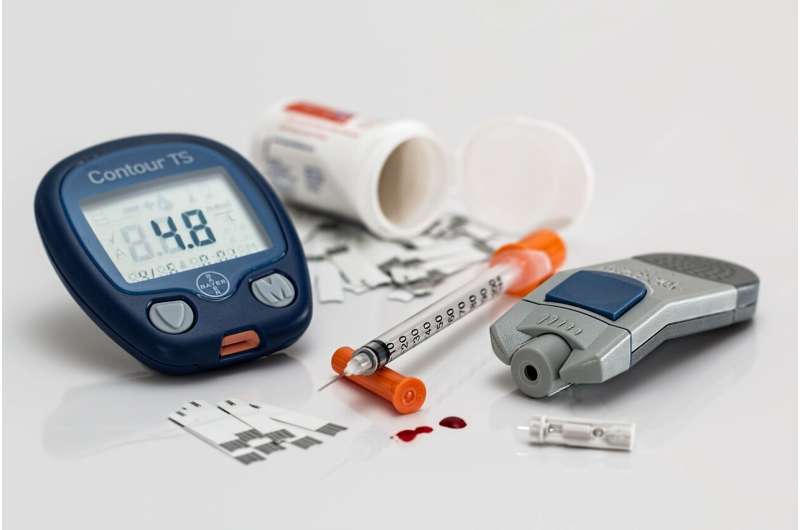Credit: CC0 Public Domain
Adolescence is a difficult period of development, made more complex for those with Type 1 diabetes mellitus (T1DM). The challenges of managing multiple doses of daily insulin administration, blood glucose monitoring, dietary and exercise requirements, can make self-care difficult and complicate outcomes. Adolescents with T1DM often have poorer diabetes outcomes than others, indicating that glucose control is difficult for them to maintain.
Data show that 88 percent of teens own a cell phone and more than 50 percent text with friends daily. Therefore, mobile technolgoies could be a key to helping adolescents more fully engage with their T1DM self-care.
In an article in the Journal of Diabetes Science and Technology, researchers outline their study combining text messaging with MyDiaText and financial incentives designed to help improve outcomes for adolescents with T1DM. The study results showed persistent engagement with and potential for increase in self-care using this intervention. MyDiaText was developed in 2012 by a collaboration with the School of Nursing, the School of Engineering and Applied Sciences and Children's Hospital of Philadelphia.
"We have demonstrated that text messaging is a promising method by which to engage adolescents with T1D who have suboptimal control, in their self-care and deserves further investigation. There remains a need to develop a digital health intervention that significantly impacts glycemic control in this population," writes Terri H. Lipman, Ph.D., CRNP, FAAN, the Miriam Stirl Endowed Term Professor of Nutrition, Professor of Nursing of Children and Assistant Dean for Community Engagement at the University of Pennsylvania School of Nursing (Penn Nursing). Lipman is the senior author of the article. The article, "A Text Messaging Intervention with Financial Incentive for Adolescents with Type 1 Diabetes" is set for publication this fall but is now available online.
More information: Tara Kaushal et al, A Text Messaging Intervention with Financial Incentive for Adolescents with Type 1 Diabetes, Journal of Diabetes Science and Technology (2020). DOI: 10.1177/1932296820952786
Provided by University of Pennsylvania School of Nursing





















